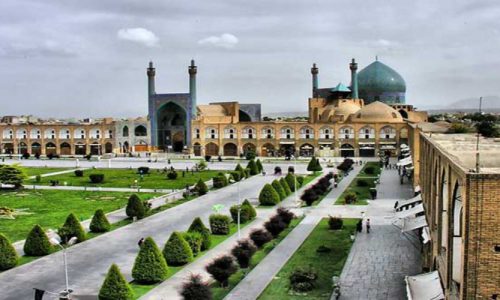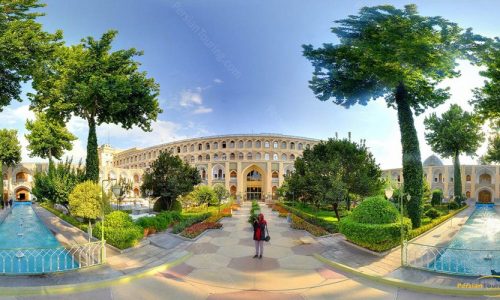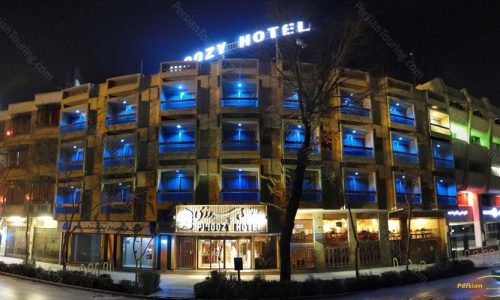Hasht Behesht Palace
Hasht Behesht, meaning “Eight Heavens” is a Safavid era palace in Isfahan, Iran.
It was built in 1669 and is today protected by Iran’s Cultural Heritage Organization. Of more than forty mansions which existed in Isfahan during the rule of Safavids, this is the only one left today.
In a dry city which is located at the edge of the desert, with long hot summer, Gardens and streams of waters, beautiful roses, shades of trees, the sound of birds and Nightingales play a great role in our lives. In a great part of Iranian literature, especially poems, gardens are beautiful parts of our lives. In holy Quran, several verses of this holy book talk about paradise, full of green trees, pure and fresh streams of water, and another blessing of Almighty Allah is promised. Gardens are a small symbol of the promised paradise. Thanks to Zayandeh Rud River which has created a green ring in the neighborhood of desert.
The Hasht Behesht Palace was built in the center of Baghe Bolbol (The Nightingale Garden) dates back to 1660. The palace is the most important building which was built during Shah Suleiman Safavid time. The palace experienced new styles of stucco work and stained glass and mirror works.
Hasht Behesht was renovated by Fathali Shah Qajar in the 19th century. It was used as a residential palace by Zele Sultan (Fathali Shah’s son). This useless man even did not maintain ornamentations of the palace.
Chahar Taghi is a type of Sassanid and pre – Islamic architecture, but the style was beautifully developed and enlarged at the time of Safavid dynasty. The structure has octagonal shape and this kind of shape can be seen in various part of it. It is two story palaces which have been seriously damaged.
During hot summer days, circulation of air and the wind, cooled by surrounding water streams and beautiful plane, and sycamore trees created a nice comfortable environment for residents.
Top Hotels near to Hasht Behesht Palace
Top Tours You Can Visit Hasht Behesht Palace

ペルシャの不思議

Culture and History of Iran




Get Social